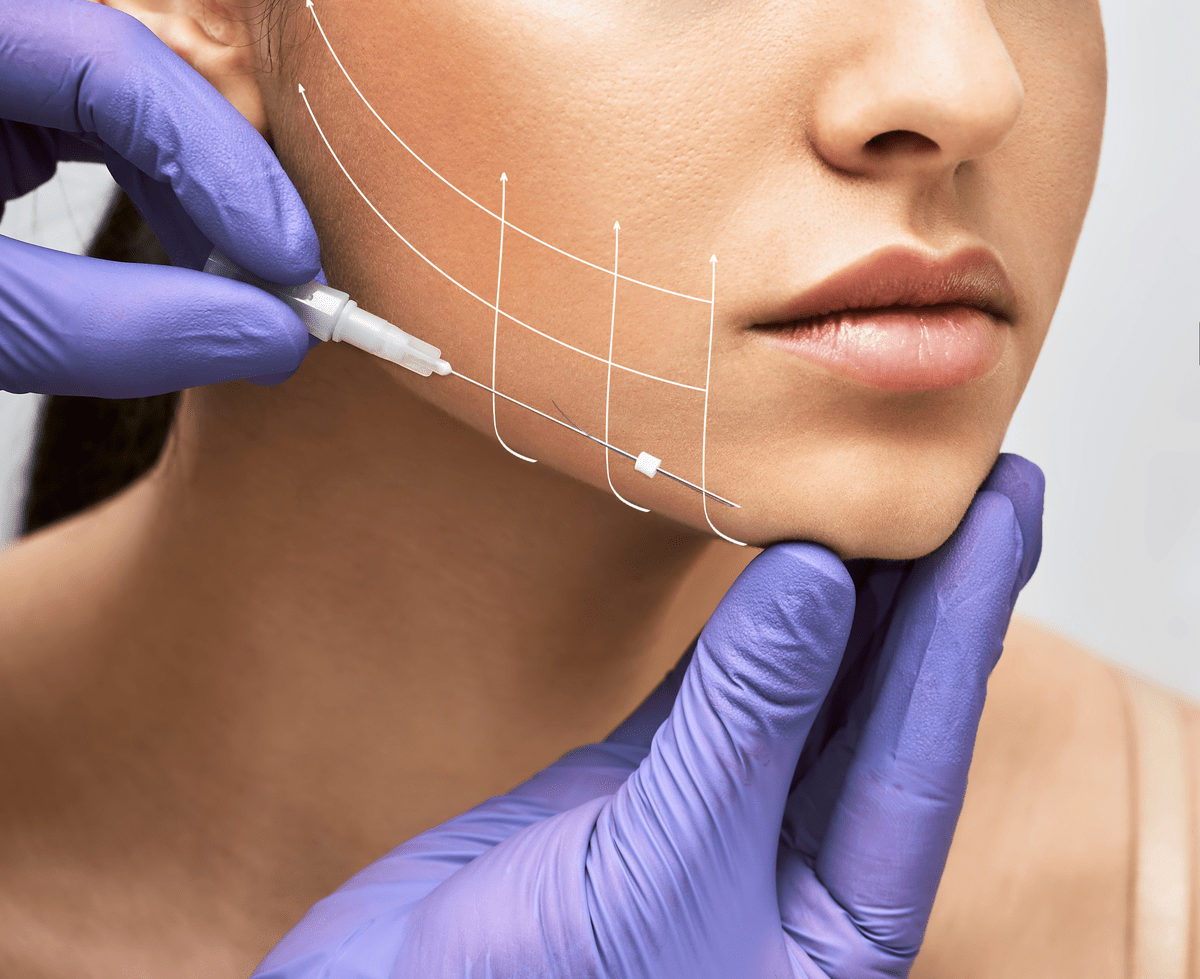
IS THIS YOUR TIME TO DO THREADLIFT?
In the late 1990s, a method called thread lift was developed to lift and sculpt sagging facial tissues. Thread lifts utilize effective medical-grade stitches to retain and tighten facial tissues.
Initially, thread lift was viewed with skepticism because of the high incidence of complications. However, with technological and procedural advancements, the safety and effectiveness of thread lifts have vastly increased.
Thread lift before and after eyes is regarded to be minimally invasive. As a substitute for the more invasive and extensive surgical facelift, an increasing number of patients are requesting thread lift operations.
WHAT ADVANTAGES DOES THREAD LIFT OFFER?
Here is a thread lift before and after photograph of thread lift therapy. A thread lift was performed on the patient’s cheeks, jowls, jawline, and neck. We obtained permission to use photograph of this thread lifts before and after photo.
Because a thread lift can be used to lift and shape the face and neck, it is regarded as a skin tightening technique appropriate for sagging skin.
To achieve maximum threading face lift before and after result, patients in their late 30s to early 50s are the best candidates for thread lift, however skin quality and tissue density are also key factors. To set realistic goals about face and nose thread lift before and after, before deciding if a patient is suitable for the procedure, the doctor will do a thorough clinical evaluation.
Thread lift can be used to address specific conditions, including
- Cheeks and chin
- Brow crease
- Under-eye region
- Forehead
- Cheeks
- Neck
WHAT ARE THE VARIOUS KINDS OF THREAD?
There are numerous methods to categorize thread based on its design and composition. Instead of focusing on the design, this article will examine the materials utilized in greater depth.
The design of face lift threads is always evolving, and they are commonly categorized as Mono, Screw, and Cog types. There are also creative designs such as Silhouette Soft’s Cone type. The design distinctions are beyond the scope of this paper.
PDO Stitches
PDO material is typically utilized as suture during surgical procedures. The substance typically dissolves within six months, but continues to promote collagen formation in the skin for up to a year.
PLLA Fibers
PLLA is an additional material commonly utilized in surgical sutures. It is even more effective than PDO at promoting collagen, especially Collagen Types I and III.
PLLA Threads can remain within the skin for up to two years. Upon dissolution, PLLA decomposes into innocuous compounds such as lactate, glucose, carbon dioxide, and water.
PCL Fibers
PCL Threads can remain in the skin for more than two years because to their stronger chemical interactions and structure. PCL is also far more effective than PDO or PLLA at stimulating collagen synthesis.
Even after the thread has disintegrated after two years, the collagen-stimulating action persists for up to an additional year. PCL Threads disintegrate into non-toxic compounds.

THREADLIFT FAQS
Is thread lift a safe procedure?
Although thread lift is typically regarded as a low-risk operation, there are still a few negative effects to consider.
Bleeding, bruising, swelling, and some pain in the treated area are minor adverse effects. 15-20% of patients may get skin dimples, but this is dependent on the approach employed by the treating physician.
How is it carried out?
As thread lift is a minimally invasive surgery, it is typically performed under local anesthesia, so you will be awake during the process.
The entire process would take between 45 and 90 minutes, depending on the complexity of the treated areas.
After cleansing and sanitizing your face with iodine or alcohol, a fine needle or cannula will be used to insert the threads under your skin.
After inserting the threads, the needles or cannula will be removed. You would experience skin tension or pressure. Obtaining the desired effect may need dozens of threads.
Upon satisfactory completion of the treatment, you are immediately permitted to return home. In comparison to surgical facelifts, thread lifts have low recovery time and can thus be performed at lunch.
How long will it continue?
Depending on the type of thread used during the surgery, results can last between one and three years. During this time, the procedure might be repeated to achieve even better or more refined outcomes.
Thread lifts can be used with nonsurgical skin tightening techniques such as Microneedling RF to tighten the skin on numerous levels. Thread lifts are most effective on the subcutaneous and SMAS layers, whereas Microneedling RF tightens the dermis.
THE THREAD LIFT CLINIC OF NEXUS
Nexus Clinic uses White Medience threads from a Korean firm that is GMP and ISO certified. They create high-quality PDO and PCL threads using cutting-edge technologies.
Malaysia’s Medical Device Authority (MDA) has registered their items as medical devices. Their products are widely utilized internationally.
Nexus Clinic attended the WMC Webinar for Plastic Surgery of Thread Lifting and received complete technical instruction. Consult Nexus Clinic now!






